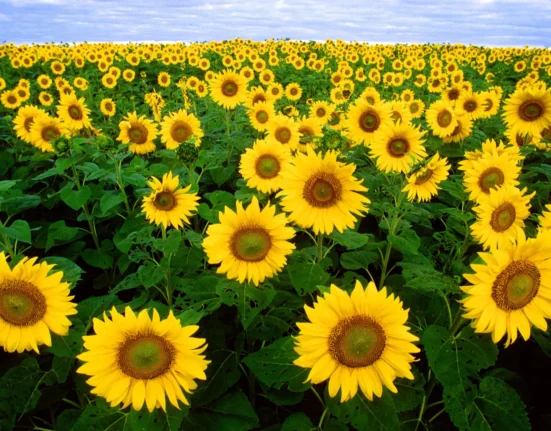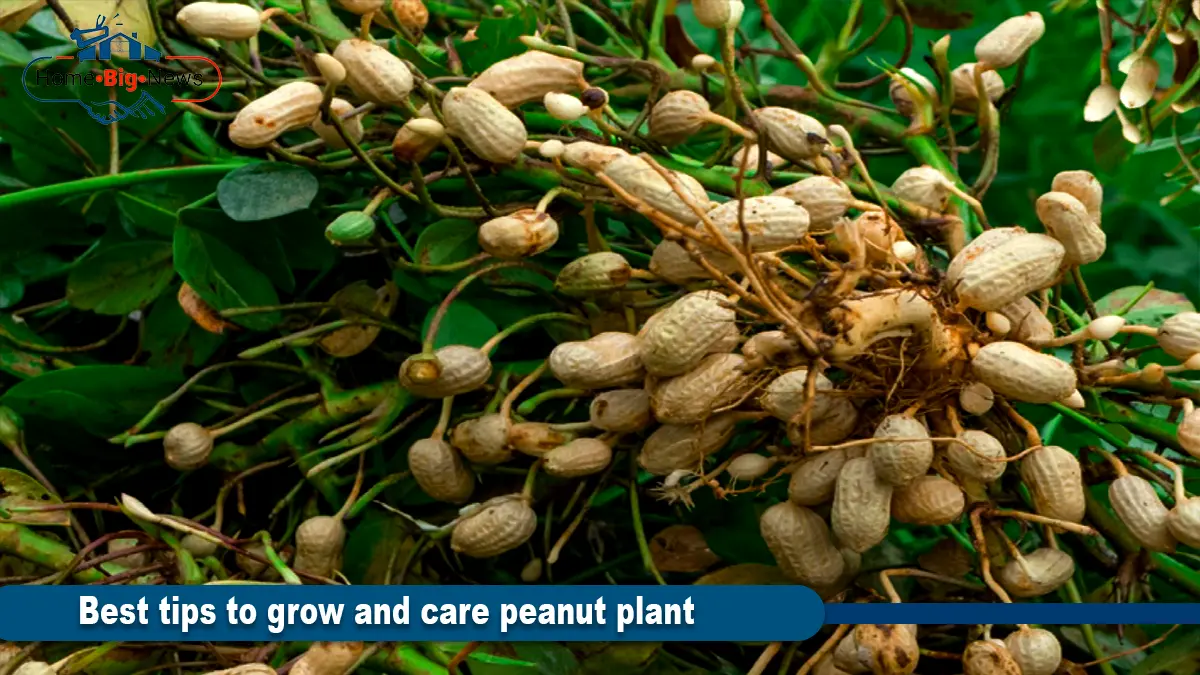There are thousands of plants in the world. People use them for their benefit. There are many plants which are harmful but peanut plant is very useful for human.
This is not nuts at all. It is the underground seeds of a tropical legume plant. It is related to peas and beans. It is really a unique plant and it has yellow flowers when it blooms above the ground. The fruit and their seeds grow at the end which is called “pegs” It grows down into the ground.
It is a long growing season. It is also growing in warmer climates. You can also plant it at your home if you want. This plant is planted from seeds (shelled peanuts) in the spring after the last frost. It is harvested in the early fall. This plant needs almost 150 days to produce edible peanuts
It is also known for goobers and the botanical name of this plant is Arachis hypogaea. It belongs to the Fabaceae family. It can be planted any season. It can grow 1–2 ft. tall, 3 ft. wide. It needs full sunlight to grow well. The soils in which it can grow are Sandy and loamy. It soil of ph is acidic. This plant blooms in spring. The hardiness zone of this plant is 2-11(USDA). You will find this plant in South America.
Growth Stages of a Peanut Plant
Every plant has stages and this plant also has. It has to pass through these stages.
Planting
It is done after the last frost. Sometimes, it also happened in April through May. It is done when soil temps have reached 65 to 70 degrees Fahrenheit. If you are planting, the planting deep of soil should be 2 inches.
Peanut cracks the soil
You will see seeds are sprouting and also shooting up out of the soil for about 10 days.
Flowers appear
You will see flowers when the plant is about 18 inches high. You will see the flowers about 40 days after planting.
Pegs” extend into the soil
This process starts from the flower’s ovary. The plant sends down from a fruiting “peg”. It will penetrate the soil. This will turn sideways to begin its transformation into a pod with seeds inside. In four or five months, you will find “peg” as many as 40 pods in each plant.
Plants are harvested
You will see plants dug up entirely from the ground, stems along underground seed pods 140 to 150 days after planting.
Combining” separates peanuts from stems.
If you see the plant has dried and the water content has dropped about 10 percent, it is time to separate from the stems. It is ready to eat and store for future use. This process is done with large machines. It is known as “combines.”
Common Pests & Plant Diseases
There are many common pests and diseases because it is an eatable thing. Hungry squirrels, mice, and chipmunks can damage your plant. You can use mesh row to covers. This thing can help here. There are also many insects that can damage leaves like caterpillars.
The common diseases of this plant are spot, rust, blight, and viral. If you are unable to find what is harming the plants, you can take help from your local university extension office. They will tell you best solution for this.
Types of Peanuts
There are many types of peanuts but we will talk about some of them.
Valencia peanuts
This plant can mature quickly almost in 90 to 110 days. This is preferred by home gardeners. It has three to five relatively small kernels per pod, with pretty red seed coats.
Spanish peanuts
This plant takes almost 90 to 120 days to mature. This peanut is used for candy and roasted peanuts.
Virginia peanuts and runner peanuts
These are two plants and both of them take 130 to 150 days to mature. Both of them can produce large amount of pods. The name of runner plants is indicating it. Both plants require much space to grow. It can grow 3.5 feet. They have small fruit with two kernels per pod. These plants have excellent flavor. These peanuts are used for excellent flavor. Both plants are intolerant of cool temperatures and drought.
Peanut Care
If you live at that place where summers are long and warm, it will be best to grow peanuts. It is because; it is most productive in USDA hardiness zones 8-11.
You will have to weed-free place. It is very important produce healthy pegs. As flowers grow and pollinated. Plant will start growing pegs into the soil. If you add some inches of mulch, it will help plant to grow to about a foot tall. It will also help to keep the soil soft enough for pegs to penetrate.
If you have done this, you should not disturb them. May be, you will see flowers but almost 15 percent of flowers are for sending a peg into the soil and grow peanuts.
Light
Every plant needs sunlight. It also needs. It needs sunlight for almost eight hours per day.
Soil
You should use loose, well-drained, sandy loam with a slightly acidic soil with a pH range of 6.0–6.5. You should not use poorly drained and hard clay soil. You should grow this plant at that place where you grew other legumes (beans or peas) in previous years.
Water
Every plant needs water to grow and for living. It also need. It needs almost 1 inch of rain or irrigation per week, especially in the growing season. You will have to water it time to time. You will have to stop watering the plants 10 days to two weeks before harvesting.
Temperature and Humidity
Temperature is very important for every plant. It is best to grow is between 86 and 93 degrees Fahrenheit. If the temperature is high, it can damage your flower.
Humid condition is also good for this plant but if you are going to harvest, dry weather is needed for harvest.
I hope this article is very helpful for you.














